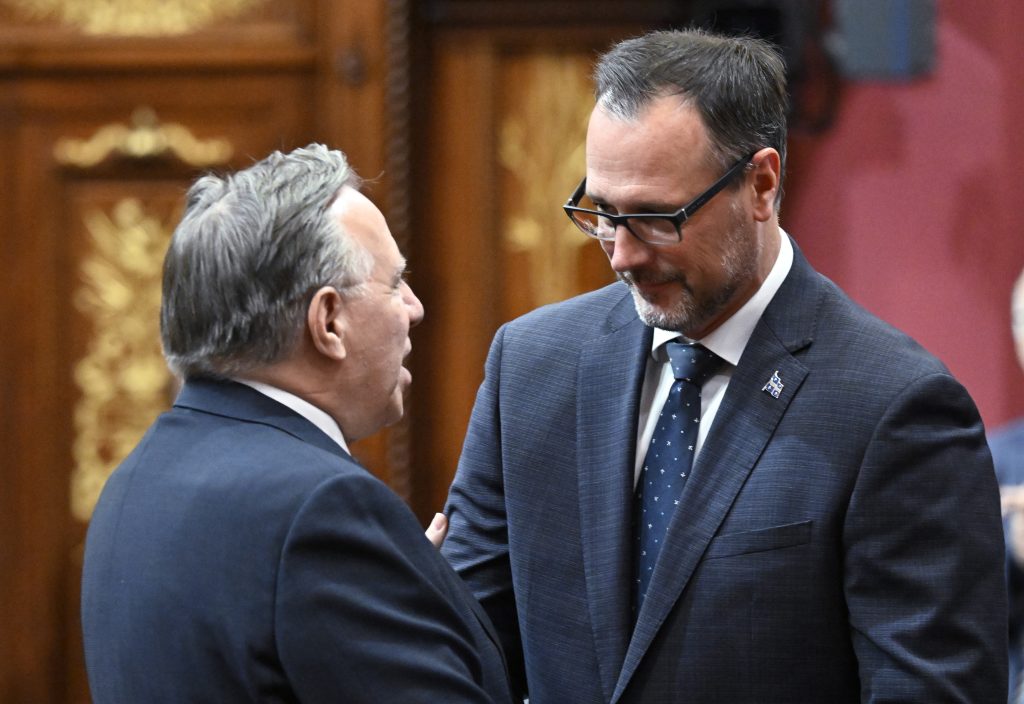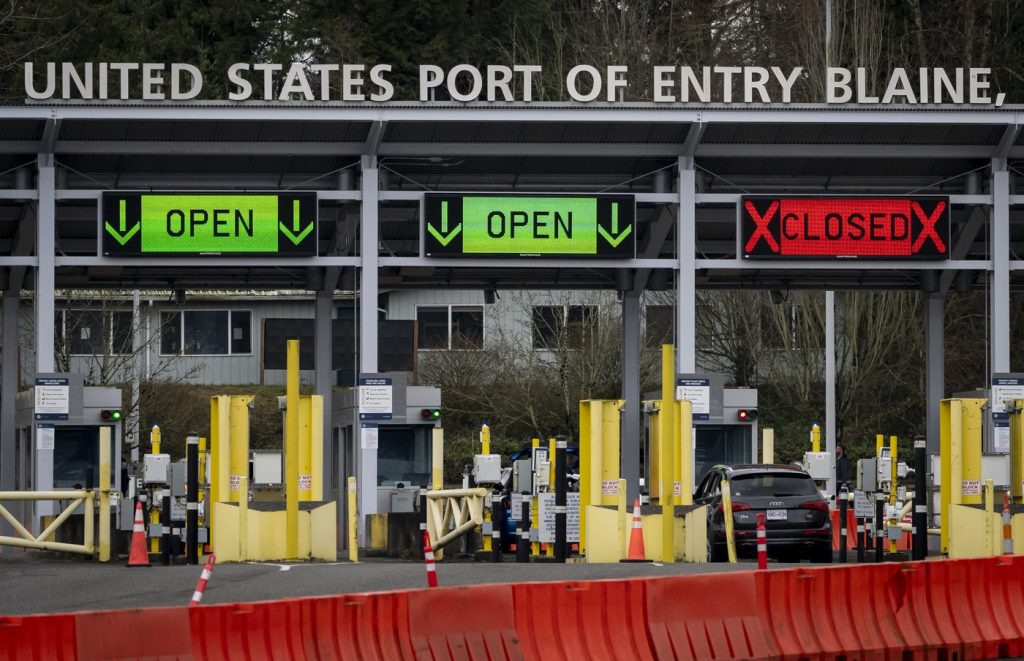Applications for international student admissions to universities are plummeting in Quebec

Posted February 17, 2025 7:25 am.
Admissions from outside the country are plummeting in some universities in Quebec.
This is what emerges from the responses obtained by The Canadian Press, which sought to find out from universities welcoming the highest proportions of international students whether the mere threat of imposing caps is already having an impact before they are announced.
Although the Minister of Immigration, Jean-François Roberge, promised to spare regional programs, voices were raised from everywhere demanding, among other things, that he avoid imposing quotas for graduate and postgraduate students (master’s and doctoral) who are at the heart of Quebec scientific research.
Ceilings soon to be known
At the minister’s office, we were told that the decree to set the ceilings would be adopted soon and that “we have always said that the goal is to promote regional programs, and that is still our intention.” However, they did not want to answer the questions asked twice about the protection of second and third cycle programs.
According to data from the Institut de la statistique du Québec cross-referenced with that of the Ministry of Education, the 17 Quebec university institutions welcome just over 56,000 international students, or 18.4 per cent of a university student population of just over 306,000 people. Half (51.1 per cent) of these international students are in the second and third cycles. Of these, six university institutions have more than 25 per cent of international students among their total student body.
INRS: two thirds of international students
In first place, far ahead of all the others, is the Institut national de recherche scientifique (INRS), a component of the Université du Québec, 67 per cent of whose students were recruited abroad. This proportion is largely explained by the fact that the INRS only has master’s and doctoral students.
However, says spokesperson Julie Robert, “the number of applications for admission from foreign students has decreased by 32 per cent in fall 2024 compared to fall 2023, while it had grown by 107 per cent between the fall terms of 2019 and 2023.”
“It seems that the decisions of the Canadian government have affected the number of applications for admission throughout Canada as well as at the INRS and that the addition of quotas by the Quebec government can only add to the fears of potential candidates from abroad,” she adds, recalling that “any real or perceived barrier can only harm the research competitiveness of the INRS and Quebec.”
Concern at UQAC
The Université du Québec à Chicoutimi comes in second with its cohort of 2,750 international students, representing 37.8 per cent of its student population (7,276). Its director of communications, Marie-Karlynn Laflamme, emphasizes from the outset that the intense recruitment efforts abroad have paid off: “International students have been significantly increasing the cohorts for the past 3 years.”
The announcements from both Ottawa – which also promised a reduction in the number of student visas that will be issued – and Quebec City have had an immediate impact, she says. “We are currently seeing a significant drop in the number of applications for admission from abroad for all of our programs.”
Although she prefers to wait until the end of the admission period before putting forward figures, she already states with certainty that “we will necessarily experience a decrease in registrations.”
ÉTS: significant drop in sight
The approximately 3,000 international students attending the École de technologie supérieure (ÉTS), also affiliated with the Université du Québec, represent one third (33.3 per cent) of the student population, which places it third on this list. Its director of public affairs, Jean-Alexandre D’Etcheverry, reports that “a significant downward trend has been emerging in admission applications since the fall. For the moment, a drop of between 30 per cent and 40 per cent is expected for the winter session, which shows that the uncertainty caused by the discussions on the subject is already having an impact. We anticipate a potential drop in registrations for the next sessions, which worries us in several ways,” he explains.
The École nationale d’administration publique (ÉNAP), another component of the Université du Québec, has just under 2,000 students, all in the second and third cycles, 29.5 per cent of whom come from abroad. The institution did not want to comment on Minister Roberge’s intentions to impose caps before they are known. According to our information, however, applications for admission are already down, although it was not possible to obtain the data to this effect.
“Long-lasting negative consequences”
The same goes for McGill University, where just under 10,800 international students represent 29 per cent of a student population of 37,000. The Media Relations Office responded to us by email that “McGill does not normally share (numbers) related to admission applications.”
The university had, however, made its point of view known on the issue of caps in a joint brief with the Universités de Montréal, de Sherbrooke and Laval, presented on November 5 during the consultations on Bill 74: “The attractiveness of Quebec to international students and the benefits that flow from it for society are the result of efforts made by universities for decades – with the support of successive governments (…) However, Bill 74 threatens to erase these gains. By opening the door to a significant reduction, by decree, in the number of international students, this bill could have lasting negative consequences for Quebec.”
A worrying downward trend
Finally, in sixth place is École Polytechnique, where more than 2,600 international students make up 27.7 per cent of the student population. “At Polytechnique Montréal, we are seeing a significant drop in international admission applications for fall 2025 compared to the same time last year,” writes Christian Merciari of Polytechnique’s Communications Department.
“This downward trend worries us because if this decrease in admission applications and registrations were to materialize, it would have harmful consequences on our various research and innovation programs,” he continues, expressing concern about the lack of information as March 1 approaches, the deadline for admission applications from international students.
The importance of international researchers
“Students from abroad make a significant contribution to research and teaching programs in our universities and industries,” says Merciari. “Indeed, nearly 60 per cent of master’s students and nearly 70 per cent of doctoral students at Polytechnique Montréal come from abroad. Their contribution to our research programs is therefore crucial to ensuring the future of technological and scientific development in Quebec.”
Polytechnique’s CEO, Maud Cohen, herself made a public statement on this subject in La Presse on November 5. Noting that Quebec students turn more quickly to the job market after their bachelor’s degree, “it is mainly students from abroad who contribute significantly to the research and teaching programs in our universities and industries. Thus, nearly 60 per cent of master’s students and nearly 70 per cent of doctoral students at Polytechnique Montréal come from abroad,” she explained, adding that 75 per cent of international graduates settle in Quebec. “If the brains don’t come here, they will necessarily go elsewhere,” wrote Cohen, while arguing that limiting their access could lead the world’s major universities to decide to restrict the admission of Quebec students.
Recruit the best teachers and students
The Director General of INRS, Luc-Alain Giraldeau, had also made a statement with an opinion letter in Le Devoir on November 11, 2024. “This international presence is advantageous for us, because it allows us to recruit the best faculty, but also the best research students in the world,” he wrote at the time, arguing that many of these students remain in Quebec and that their contribution allows the emergence of discoveries that are very Quebecois.
Jean-Alexandre d’Etcheverry, from ÉTS, also points out that “the decline could reduce our capacity to provide the engineers needed for Quebec projects, and since the decline is being felt a lot in graduate studies, we are concerned about the impacts on applied research with businesses.”
Chief Scientist Gets Involved
Even Quebec’s chief scientist, Rémi Quirion, added his voice in an opinion piece published by Le Devoir on November 14, recalling his own career as a researcher. “Without the essential contribution of foreign students, my laboratory would simply not have succeeded in standing out as a world leader in research on mental health and neurodegenerative diseases,” he wrote. According to him, on the contrary, it was essential to maintain, or even increase, the number because “in several disciplines and fields of research where Quebec excels, the lack of Quebec and Canadian students is alarming (life sciences, engineering, digital, aerospace, environment and several others).” He suggested at the very least that the government exclude students at the master’s, doctoral and postdoctoral levels from its possible restrictions.
The Money Question
Overall, universities only vaguely or indirectly address a reality that they nevertheless observe very closely: money. Any reduction in the number of international students will result in a major loss of revenue. Their tuition fees are far higher than those paid by Quebec students.
For example, at INRS, which has 67.3 per cent international students, they pay between $9,636 and $12,048 per term, depending on the type of master’s or doctorate, compared to $1,644 per term for Quebec students at all levels (all data presented here includes other fees – general fees, student services, student associations – in order to reflect the real cost of studies beyond tuition fees. Some data were available by term, others by year).
At ÉTS, Quebec students pay $4,790 per year for a bachelor’s degree and $3,600 per year for a master’s and doctoral degree. International students must pay $34,460 for a bachelor’s degree and $20,290 to $25,600 per year depending on the type of master’s degree. They only pay $4,670 for a doctorate, but that’s because scholarships from the Quebec government make up the difference, so ÉTS still receives the full tuition fees required of all international students.
In the case of ÉNAP, Quebec students pay $1,980 per term at all levels, while international students pay $7,723 for the doctorate and between $8,544 and $10,292 depending on the type of master’s degree.
Programs at risk
These are just a few examples of the gaps between what Canadian students pay and what international students pay. Even greater gaps can be seen at some universities, where costs vary greatly from one program to another. Universities with large contingents of international students are therefore concerned about finding themselves with significant revenue shortfalls. McGill University announced on February 10 that it would be making significant cuts, mainly because of the expected decrease in international students.
Marie-Karlynn Laflamme, from UQAC, is very clear on this subject: “We are currently measuring the impact of various scenarios of a drop in international students on our 25-26 budget year and our programs,” thus suggesting that programs that are too under-attended could disappear, despite Minister Roberge’s promises to spare the regions.
–This report by La Presse Canadienne was translated by CityNews








